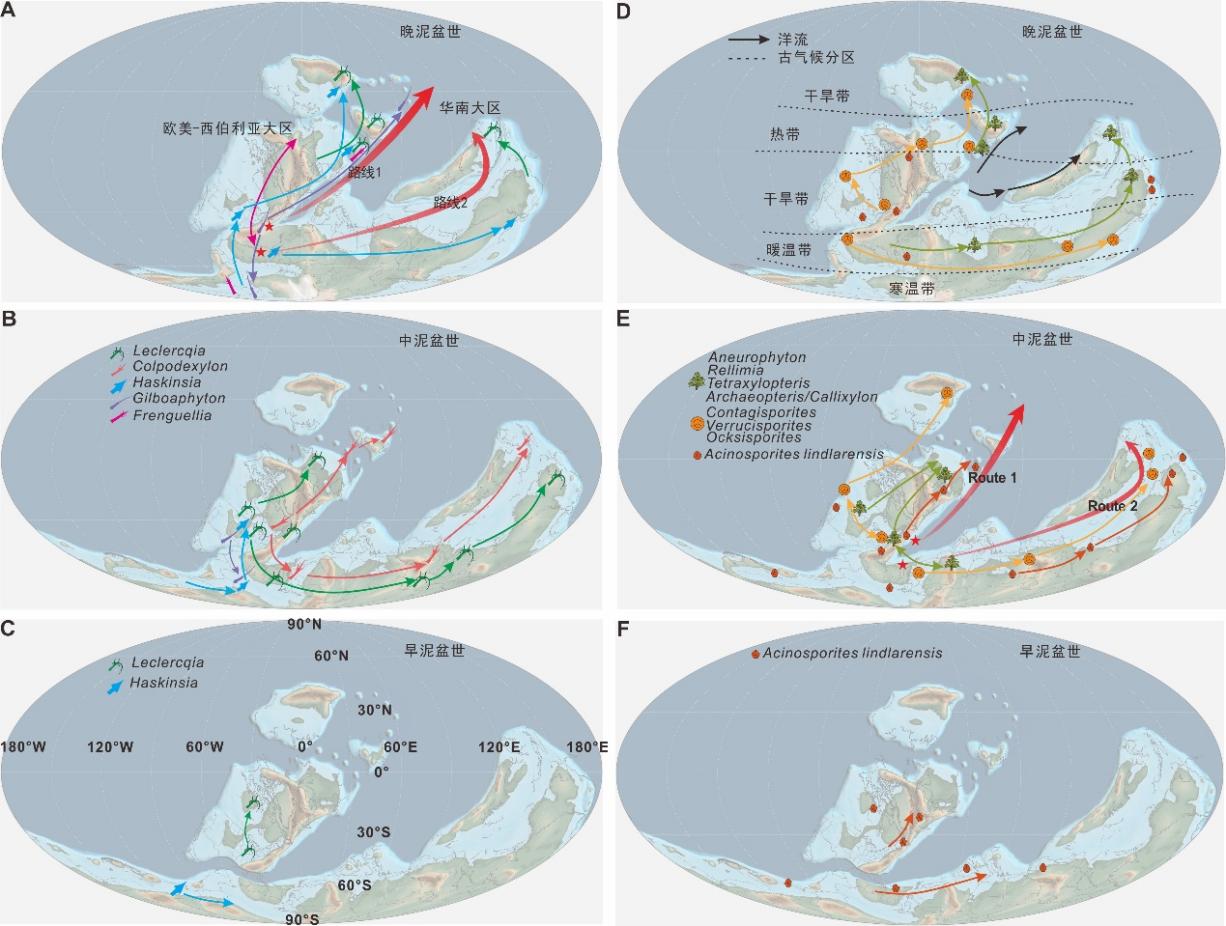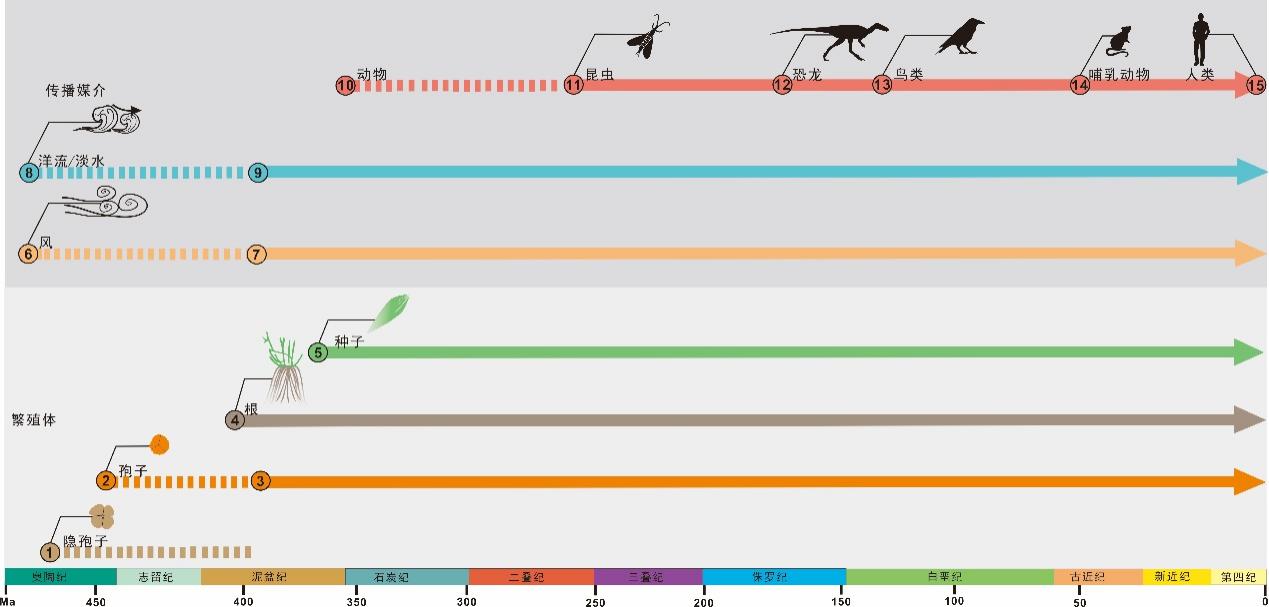However, previous studies have primarily focused on recent timescales and the dispersal of seed propagules. Little is known about their dispersal dynamics or the biogeographical zonation of plants throughout geological history. The fossil records provide new insights into plant dispersal in deep-time.
Recently, the Early Land Plant Evolution working group of Nanjing Institute of Geology and Palaeontology, Chinese Academy of Sciences (NIGPAS), led by Prof. XU Honghe, compiled an up-to-date dataset on occurrences of specific Devonian groups spanning from the Early Devonian to the early Mississippian. The research result was published in Palaeontology.
Meanwhile, the research group analyzed the spatio-temporal distribution, network and species diversity, and recognized the plant dispersal and biogeography of Devonian plants.
In this study, the research group constructed a new dataset and contained a total of 367 occurrences and 135 fossil localities, representing 92 species belonging to 16 genera. The results show that species diversity of herbaceous lycopsids and progymnosperms peaks during the Givetian Age, and then declines. The latitudinal and longitudinal gradients of herbaceous lycopsids were mainly concentrated at southern hemisphere during the Early Devonian and gradually expanded northward and eastward from the Early to Middle Devonian and expanded westward in the Late Devonian, and the progymnosperms show the similar distribution to herbaceous lycopsids. The phytogeographical zones, South China and Euramerica–Siberia realms, were formed along the plant dispersal globally.
Furthermore, the plant dispersal routes of Devonian plants are recognizable when analyzing their spatio-temporal dynamics from Early to Late Devonian. The first route is clockwise, including the North America, Baltica, Kazakhstan, Junggar and Siberia plates. The second route is anticlockwise, and it goes from North America or South America, across northern Gondwana to the Antarctica, Australia and South China palaeoterrains. These two routes clearly linked to Devonian sea-land topography.
Additionally, the research team also proposed two plant dispersal models based on the dispersal in the Devonian. Inter-land dispersal refers to plants spreading between relatively isolated lands that act as land bridges, for example, palaeogeographically the Junggar volcanic arcs acted as land bridges in the dispersal of Devonian plants. The inland dispersal refers to the dispersal within a continent, such as the plant dispersal along the northern Gondwana.
“Fossils provide direct evidence for our understanding propagule evolution and diversity in deep time. Our study indicated that propagules and dispersal vectors and are increasing and complex, and changes in dispersal vectors promote plant colonization and increase in diversity”, says XU.
This study was supported by National Key R&D Program of China and the Chinese Academy of Sciences. This study is one of series contributions to the Deep-time Digital Earth Big Science Program.
Reference: Liu, B. C., Wang, K., Bai, J., Wang, Y., Huang, B., & Xu, H. H. (2024). Plant dispersal in the Devonian world (c. 419–359 Ma). Palaeontology, 67(3), e12699. https://doi.org/10.1111/pala.12699.

Spatio-temporal distributions and dispersal routes of Devonian plants.

Patterns of the plant dispersal in deep time, based on fossil occurrence data.

Evolution of plant propagules and dispersal vectors in deep time according to the fossil evidence.
Contact:
LIU Yun, Propagandist
Email: yunliu@nigpas.ac.cn
Nanjing Institute of Geology and Palaeontology, Chinese Academy of Sciences
Nanjing, Jiangsu 210008, China
Download:
